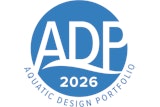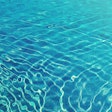![Omaha’s CHI Health Center [Photo from Swimswam.com by Mike Lewis]](https://img.athleticbusiness.com/files/base/abmedia/all/image/2021/07/ab.aquatics721_feat.png?auto=format%2Ccompress&q=70&w=400)
Once the 2021 United States Olympic Swimming Trials concluded June 20, deconstruction of the staging in Omaha, Neb., promptly began. However, swimmers in Minnesota and Florida will soon get opportunities to dive into the same pools that hosted one of this summer's highest-profile meets.
That's because Olympic Trials pools have become portable products. Each of the past four versions of the event, dating back to 2008, have seen the pools taken straight from the qualifying event to their permanent home. The 2021 competition pool will eventually be part of V3 Sports in Minneapolis, while the warmup pool will find a place at the Florida Aquatics Swimming and Training facility in Ocala.
"We've done 500-plus projects in 20 years, but none of them are temporary, they're all permanent in-ground pools," says Myrtha Pools director of sales Mike Mintenko, a retired two-time Olympian who has been with the manufacturer since 2006. "These pools have both already found a home. They're taken down and dismantled three days after the Olympic Trials — packed up, put on trucks and shipped to their final destination.
"In most or all locations, they have world records in these pools, because you've got the best swimmers in the world in them. That legacy gets passed on to the future home and the new community that pool goes to."
It's a unique path that starts in Italy, where Myrtha Pools — a USA Swimming partner since 2006 — begins construction on the pools, which are shipped in pieces to Omaha in advance of the trials. However, that process hit a snag this go-around, as the COVID-19 pandemic pushed the 2020 Tokyo Olympics — and therefore the trials — back a year.
"We start planning about 10 months before we start having a monthly call," says Scott Hyland, sales director at Evoqua Neptune-Benson, which provided filtration and disinfection treatment systems for the Olympic Trials pools. "A lot of coordination between these different teams. It's kind of cool. We don't often get to put on a professional event. We were having all these meetings until it was canceled. It was, 'Is it going on?' It got right about to the point where we almost had to make a decision. 'Do we make this stuff? Do we order this stuff?' But it didn't get too into crunch time."
While the pandemic caused a delay and uncertainty over whether or not the Olympics would be held, the situation didn't change much for the pools themselves.
"We actually had already made the competition pool, so we were basically planning and organizing everything so the pools would arrive in time for a May build in 2020," Mintenko says. "That required us to obviously have the pools underway and manufactured and everything like that in early January or February. COVID hit, and we ended up not shipping the competition pool. The warmup pool wasn't made yet, but it just gave us more time. We didn't have to rush in terms of making the competition pool for this year because it was already made. We actually shipped it ahead of time to avoid any challenges with international shipping. We wanted to make sure we were protecting the interest of the event."
The plan came to fruition as two 50-meter pools were set up inside the CHI Health Center in Omaha for the Olympic Trials, which began June 4. The event featured a 10-lane competition pool that was 50 meters long by 26 meters wide on the site of Creighton University's basketball floor, as well as an l-shaped warmup pool that was 50 meters long and 25 yards wide inside the adjacent convention center.
"One thing about this venue that was really ideal was the proximity from the warmup pool to the competition pool," Mintenko says. "That's huge, because as an athlete you don't want to be walking a ton. You don't want to constantly be on your legs, so the ability to compete in your race in the main competition and literally walk right over and jump in the warmup pool to flush out the lactic acid and get yourself prepared for racing later in the meet or later in the session, that's a huge advantage."
![[Photo from Swimswam.com by Mike Lewis]](https://img.athleticbusiness.com/files/base/abmedia/all/image/2021/07/ab.aquatics721a.png?auto=format%2Ccompress&fit=max&q=70&w=400) [Photo from Swimswam.com by Mike Lewis]
[Photo from Swimswam.com by Mike Lewis]
On-site installation
While the construction process begins in Italy, the installation process begins in an Omaha parking lot. Following Creighton's mid-May graduation ceremony, the pieces were taken inside for construction. The movable Olympic Trials pools are constructed, filled with water, heated and treated in 14 days.
"It's always a rush," Mintenko says. "At the same time, we've got so much experience and we've done so many of these temporary events that we know how to overcome the challenges that might come forward.
"In 2012, we actually built the two pools in 10 days, so we had a few days extra time this year. But I don't consider it extra time, because it's still crews of 35 people working 20-hour days. That's our specialized technicians and other contractors from around the country helping build it — both on the mechanical side and pool surface side. All of them team together and, with some local union labor, put this thing together quite fast."
Prepping a pool for a major event involves doing more than just filling a tank with 1.7 million gallons of water. Pumps are installed to circulate more than 8,500 gallons of water per minute; race lines, lane markers, starting blocks and backstroke ledges are put in place; spectator seating is organized; and everything is examined to ensure a smooth, respectable and statistically valid competition.
Organizers and construction companies have it down pat, given their years of experience, hammering out a process that hasn't changed much during recent iterations of the event.
"You know what to expect," Hyland says. "The first year, going into it, it was like, 'Yeah, we've got it all covered,' and then, 'Uh oh, we didn't think of that.' But what's great is it's still the same core people who are putting it together. We've built these relationships over the years, and it's a lot of fun."
"The reality is that we've done 50-plus of these championship events over the last 25 years around the world," Mintenko says. "There have been aspects of the build that we've gotten better at or faster at because of new technologies, etc. This build compared to previous years is pretty much the same. We used to utilize a sacrificial footer foundation, which is a precast concrete foundation placed on top of the arena floor because we're not able to drill our anchoring positions, our rods and chemical anchors into the arena floor because it's got all the piping. So, we actually went to a steel structure as the base of the pool, almost like a cage, and we're anchoring the pool to itself. That's pretty much all that's really changed."
With all eyes in the United States swim world on Omaha, the trials also provided Myrtha another opportunity to showcase its pools. The company brought in more than 125 guests, taking clients, architects and general contracts underneath the decks and to the backside of the pool to see the entire operation.
Diving in
That said, the main showcase is what takes place in the water. The competition looked a little different this year, as the Olympic Trials were split into two weeks to help spread out athletes during the pandemic. Therefore, the first wave of the 1,500-plus swimmers competed from June 4 through June 7. The athletes with the best chance to compete in the Tokyo Olympics, which are scheduled for July 23 through August 8, hit the Omaha water from June 13-20.
"Working with USA Swimming and Counsilman-Hunsaker, we developed a design and wanted to make sure we had wide lanes and deep pools. The competition pool's slightly deeper than 2.5 meters and then the warmup pool is 2 meters deep," Mintenko says. "We've got a deep, fast pool and we've got all the state-of-the-art equipment in it."
The facility also needs to be exact for a major event that comes with high stakes.
"That competitive pool needs to be surveyed," Hyland says. "As soon as the pool's built, there are surveyors there to make sure it's the precise dimension so that if any records are broken, they can be validated."
High stakes also come with high interest. NBC televised all eight nights of Wave 2 of the competition, meaning that the pool needed to have clean, healthful water that was camera ready. Each night, workers dove into the water to vacuum and scrub the pool.
"We're doing the mechanical systems," Hyland says of Evoqua's role in the Olympic Trials pools. "First the water goes through a strainer to remove any big stuff to protect the pump propeller. Then the pump pushes the water through our filter, then through our UV secondary disinfection system, then it goes on and gets heated by a heat exchanger, and then it gets chemical injection prior to going back to the pool.
"We're removing particulate from the water. We're removing organics, any large solids. A sand filter only filters out what the human eye can see, but the Defender® filter we're using has the ability to filter down to one micron. It's got the capability to filter out red blood cells, so it's providing that pristine, clear water."
Swimmers put the Defender and the other disinfectant systems through their paces. Sweat, oils and bodily fluids interacting with the chlorine create disinfection byproducts and the odor that people tend to identify as bad chlorine smell.
"When you walk into a hotel and you say, 'Oh, the pool's over there, you can smell it,' those are the chloramines, the disinfection byproducts. The off-gassing creates the smell," Hyland says. "You think it's the chlorine, but it's really what the chlorine interacts with in the water. It's very toxic to breathe in, and it's very heavy. Our UV destroys anything that goes through it — the disinfectant byproducts — so the 15,000 spectators in Omaha could watch the trials and have a comfortable experience. They're not going to smell it, and it's healthier for the competitors not having to breathe it in.
"Cleaner, better water that's going to send less into the atmosphere — that's going to provide for a more comfortable environment."
Hyland believes those disinfection products aren't only essential for world-class events such as the Olympic Trials, and that the aquatics industry is learning more about the importance of disinfection and cleanliness in everything from indoor competition pools to outdoor recreational aquatics facilities.
Community use
While the Olympic Trials pools are as fine-tuned for competition as possible, they will have more broad uses in their permanent homes. That's common in the aquatics industry, as it's rare to find a pool that is intended for one activity.
"My perception of that probably changed," Mintenko, who represented Canada in the 2000 and 2004 Olympics, says of what the term "competition pools" means to him. "Early on in the job, if I would have thought competitive pool, I probably would have thought an Olympic meet scenario. But the reality is, even in those pools, they get programmed for community use. While at certain times of the year they might be the most spectacular competition facility, the fastest pool, attract the best athletes, all that kind of stuff, in the end, those facilities are used at institutions such as schools, colleges and communities to use and support the entire lifestyle of aquatics."
The aquatics lifestyle will come alive at V3 Sports and Florida Aquatics Swimming and Training, as the Trials pools are installed over the next year. Myrtha keeps the end-user in mind when constructing the Olympic Trials pools, according to Mintenko.
"If we know in advance where the pool's going, and in the case of V3, we actually sold the pool a couple years ago, we can work with the owner in understanding where they're going to build and make sure that the pool that's being utilized can be reconfigured to meet their final needs, or already meet their needs on the front end," he says. "In some cases in the past with these trials pools, they've reconfigured the pools and made them a little bit smaller, or made them longer and added bulkheads and things like that. Because we're a modular system, we have the flexibility to adapt it and change the design for the final end-user.
"The warmup pool, because it's got that l-section, owners have actually taken that pool and split it into two different pools. We added more wall panels to make it into two different bodies of water, so we can really program to meet the final end-user's needs."
This article originally appeared in the July|August 2021 issue of Athletic Business with the title "Temporary Olympic Trials Pools Take Long Path to Final Home." Athletic Business is a free magazine for professionals in the athletic, fitness and recreation industry. Click here to subscribe.





































